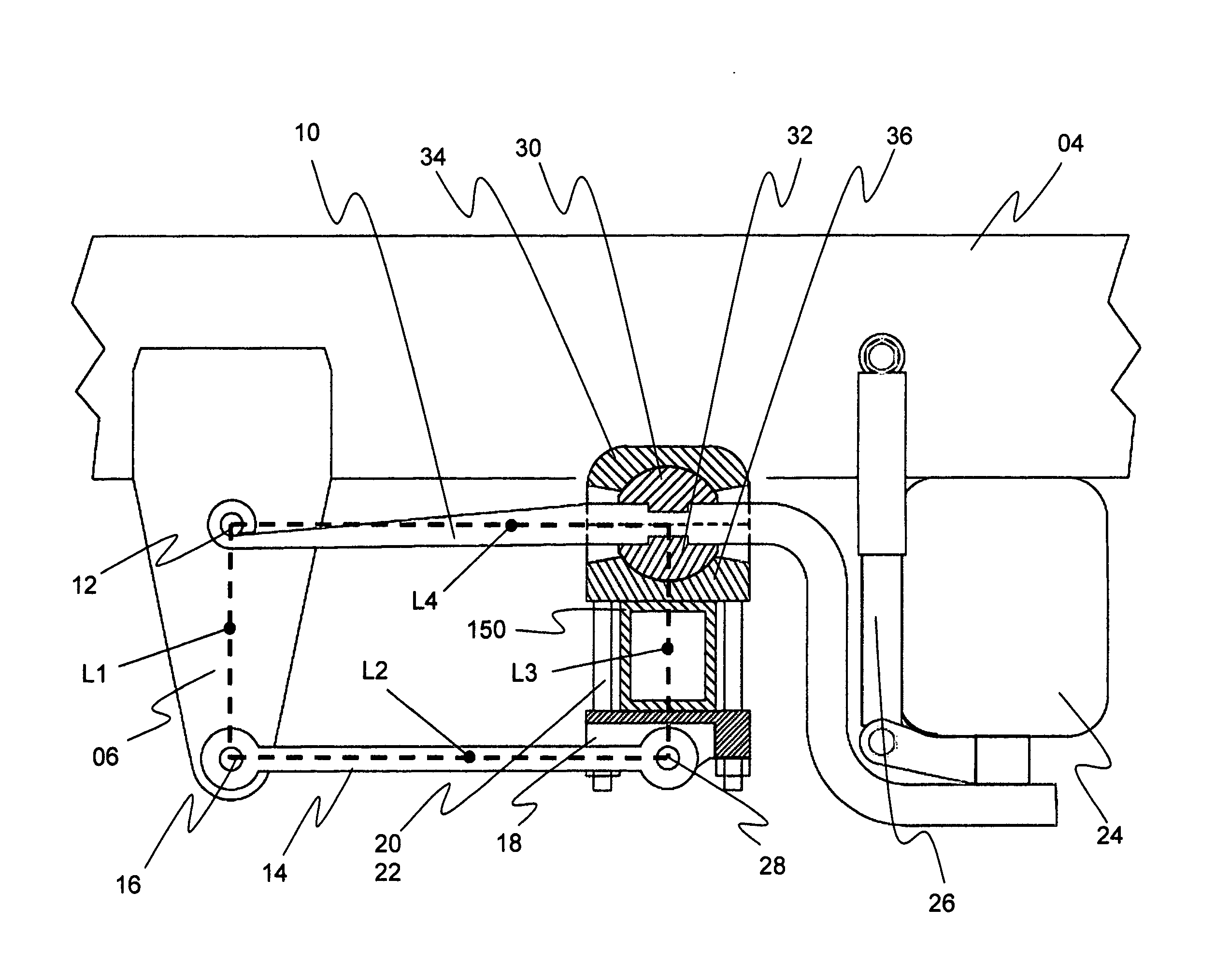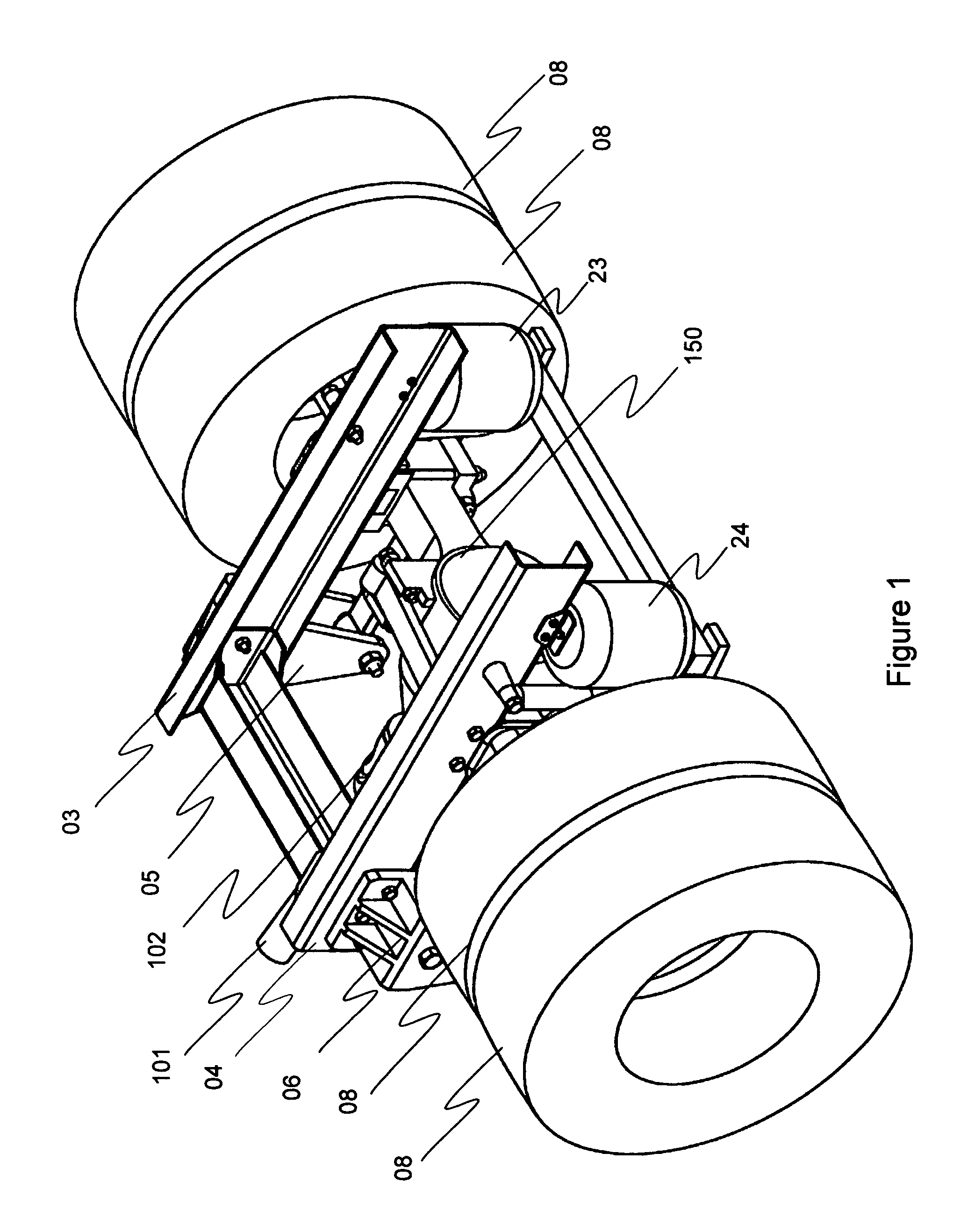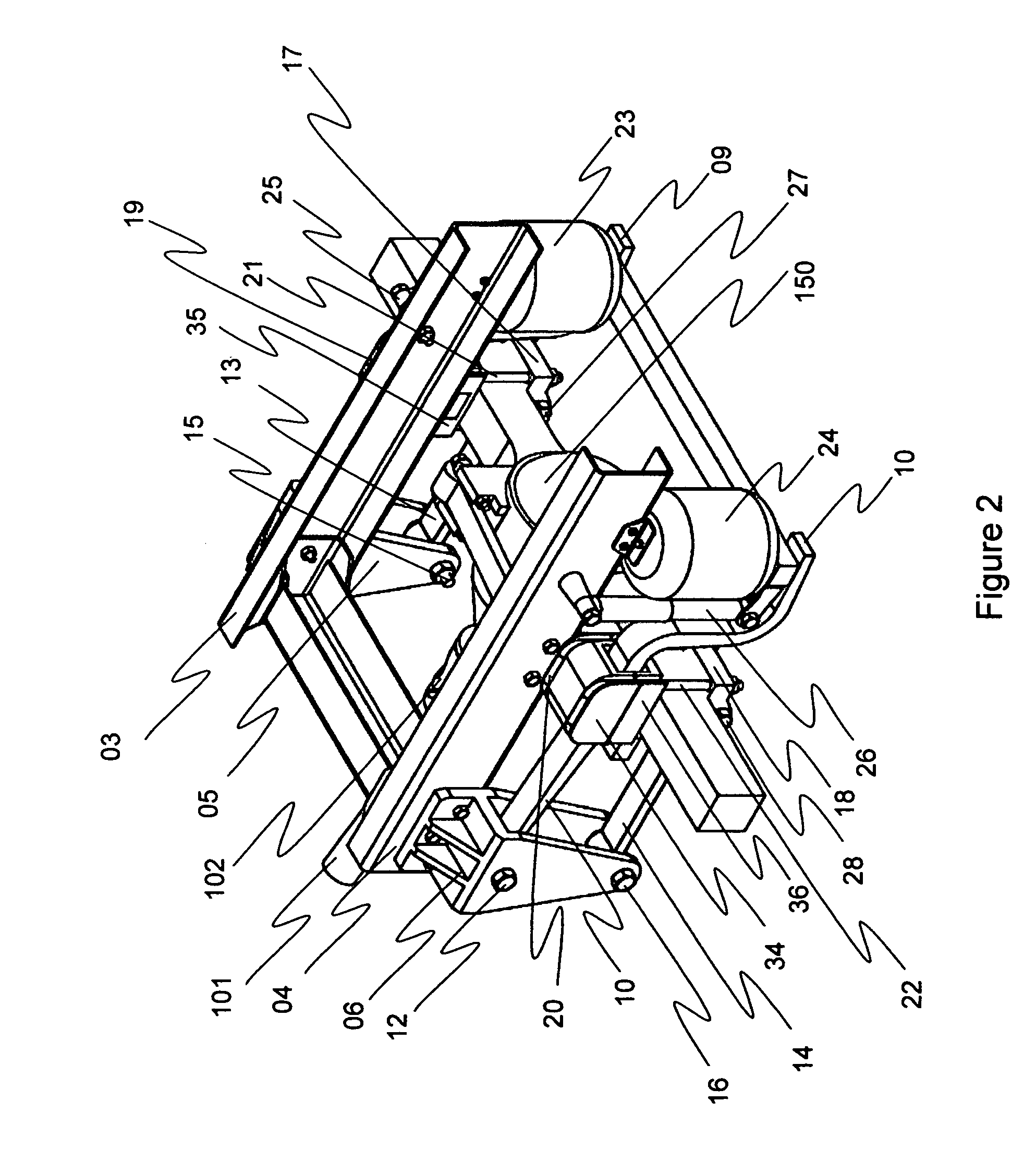Vehicle air suspension
a technology of air suspension and pinion shaft, which is applied in the direction of suspension arms, pivoted suspension arms, transportation and packaging, etc., can solve the problems of occupant discomfort, parallel pinion arrangement and broken back arrangement of pinion shafts are susceptible to change in pinion shaft angle, and achieve the effect of relieving the axle of forces
- Summary
- Abstract
- Description
- Claims
- Application Information
AI Technical Summary
Benefits of technology
Problems solved by technology
Method used
Image
Examples
Embodiment Construction
[0022]FIG. 1 illustrates portion of the truck chassis showing the general arrangement of the suspension on a single driven axle with the propeller shaft 101 and axle 150. Frame rails 03 and 04 are oppositely spaced steel channel sections oriented longitudinally in the truck. Hanger brackets 05 and 06 are shown mounted on the out-board side of the frame rails. Tires 08 are shown mounted on either side of the axle 150. Partial view of propeller shaft 101 is shown connected by cardan type universal joint 102 to a driven axle 150.
[0023]FIG. 2 illustrates portion of truck chassis showing general arrangement of the suspension on a single driven axle without tires. The hanger brackets 05 and 06 are rigidly attached to the frame rails 03 and 04 respectively by a plurality of fasteners. Trailing arms 09 and 10 are shown connected to the upper portion of the hanger brackets 05 and 06 by pivot pins 11 (not visible in the Figure) and 12 respectively. The portion of the trailing arms 09 and 10 a...
PUM
 Login to View More
Login to View More Abstract
Description
Claims
Application Information
 Login to View More
Login to View More - R&D
- Intellectual Property
- Life Sciences
- Materials
- Tech Scout
- Unparalleled Data Quality
- Higher Quality Content
- 60% Fewer Hallucinations
Browse by: Latest US Patents, China's latest patents, Technical Efficacy Thesaurus, Application Domain, Technology Topic, Popular Technical Reports.
© 2025 PatSnap. All rights reserved.Legal|Privacy policy|Modern Slavery Act Transparency Statement|Sitemap|About US| Contact US: help@patsnap.com



